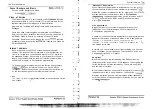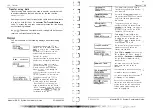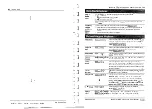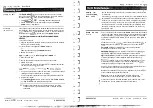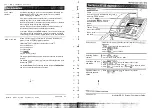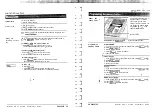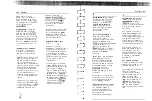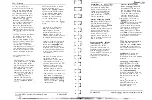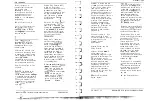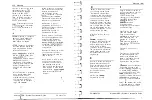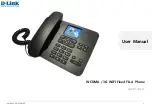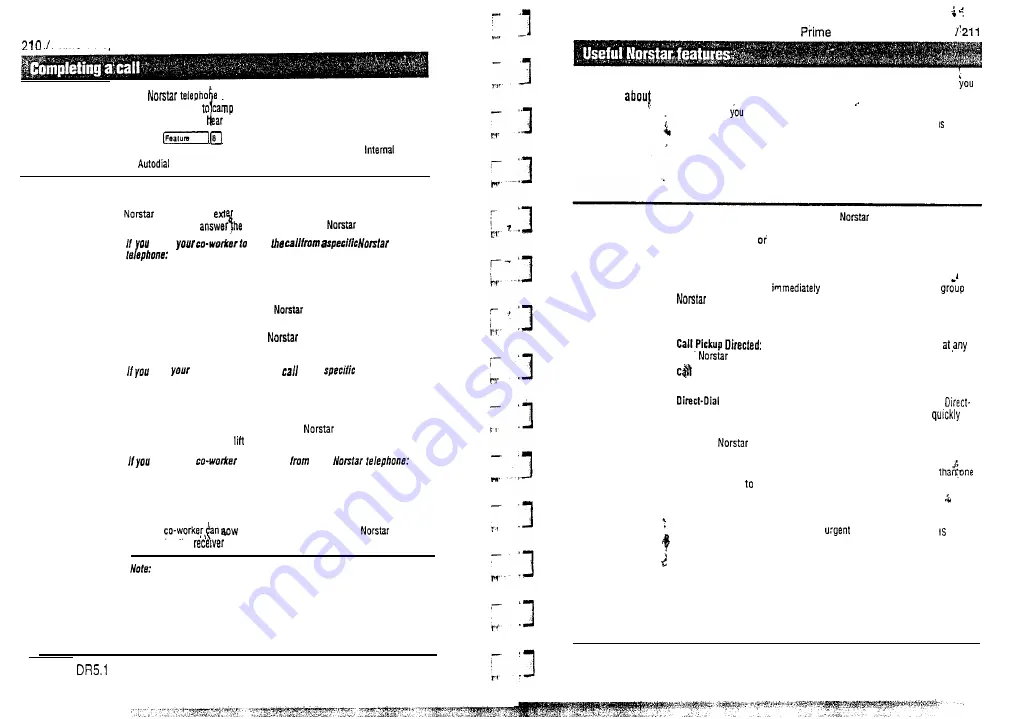
Prime Teleohone
User Card
Camping the
call
If the
you want to transfer the call to is busy on another
call, you may want
the call on that telephone. The person receiving
the camped call will
Camp-On tones (two quick beeps).
1 . Press
q
or the Camp-On button (if programmed).
2 . Dial the internal number of the other telephone or press its
button if programmed.
Announcing
the active call
You are trying to pass calls you have answered
to
co-workers who are not at
their telephones. Using the Page feature, you can announce the calls over the
telephones. an
rnal loudspeaker. or both. A co-worker hearing an
announcement can
call from the nearest
telephone.
Want
take
1. Place the call on hold.
2 . Using the Page feature, announce the call and the location of the telephone
to which you will transfer the call.
3. Transfer the call to the appropriate
telephone.
O R
Camp the call on the appropriate
telephone.
4. Replace your receiver.
want
co-worker
to
take the
on
a
tine:
1. Place the call on hold.
2. Use the Page feature to announce the call and its line number.
3. Replace the receiver.
Your co-worker can now go to the nearest
telephone that has that
line, select the line, and the receiver.
want
your
lo take the call
any
1 . Use the Call Park feature to place the call on hold. Your telephone shows a
three-digit Call Park Retrieval code on the display.
2 . Use the Page feature to announce the call and the Call Park Retrieval code.
3. Replace your receiver.
Your
retrieve the call fmm any other
telephone
by lifting the
and dialing the three-digit code.
Remember that callback (the call is redirected back to your Prime
Telephone) occurs if your transferred, parked, or camped call goes
unanswered.
Modular
System Coordinator Guide
P O 8 4 2 6 4 7 0 2
Telephone User Card
Informing your
co-workers
their calls
Working with other
features
Use the Send Message feature to notify co-workers that they should call
for information.
If the person
are trying to call is on another line. or their telephone has 00
Not Disturb ON. a display message shows you that their telephone busy. If
the person you are trying to call does not answer, a display message informs
you that there is no reply. In each case, you can use the Ring Again feature.
The Ring Again feature is a method of ensuring that you immediately know
when there is a change in the use of the other telephone. You can then try
again to place a call.
Some of the many special features which
provides may be particularly
useful to you. Some of these features, however, are only available if assigned
during Configuration Administration programming. Speak to your System
Coordinator to determine which features you can use, and to obtain details on
how to use them.
Answer Group: You can
answer and monitor a specific
of
telephones. for example, your managers’, using Answer buttons:
Automatic
Handsfree: If programmed, you can use the Handsfree
microphone and speaker for all your calls.
Anyone in the office can answer a call ringing
other
telephone by dialing that telephone’s internal number.
Pickup
Group:
Any member of a specified group can answer an external
or internal call ringing at another telephone within that specified group.
Telephone: If your Prime Telephone is administered as a
Dial telephone, anyone assigned to your Direct Oial telephone can
contact you by dialing an assigned single-digit number.
Hotline: A
telephone may be programmed to automatically dial your
Prime Telephone as soon as its receiver has been lifted.
Multiple Prime Telephones: There may be a requirement for more
Prime Telephone provide backup answering.
Page
Zone: If you do not want to disturb the entire office with an
announcement, you can direct the page to a choice of smaller areas.
Priority Call: If you have answered an
call for someone who busy
on another line, you can interrupt the person with this feature.
P O 8 4 2 6 4 7 0 2
Modular DR5.1 System Coordinator Guide

